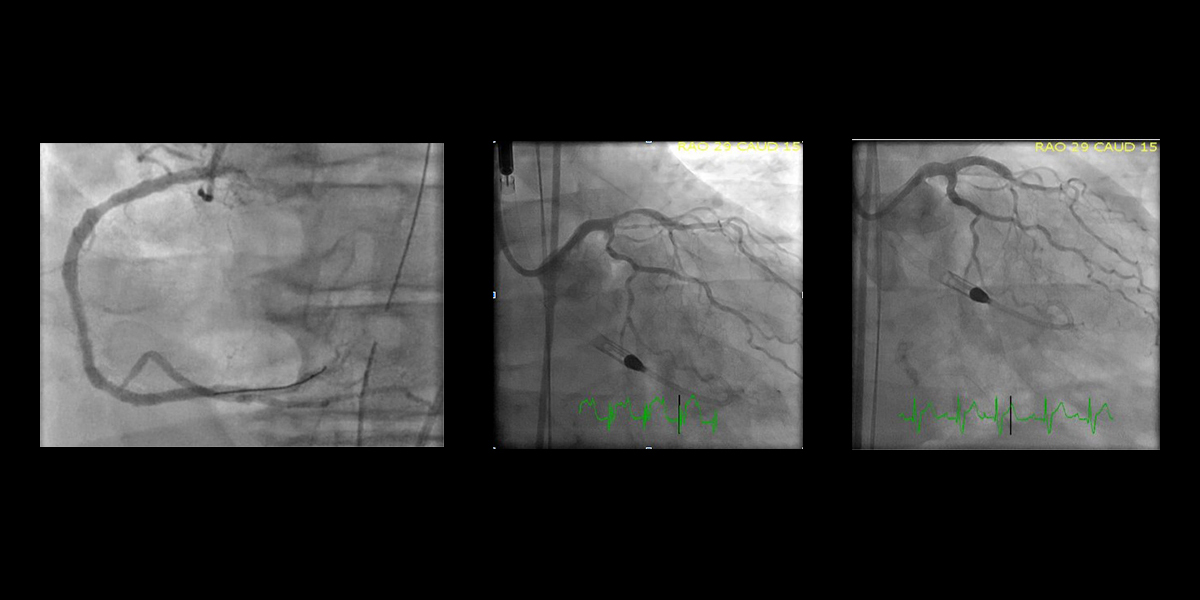Case Study: Multiple Blocked Arteries Found After STEMI Event Call for Quick, Multi-Site Care from Hackensack Meridian Health
Coordinated Stabilization, an LVAD and Stenting Save Patient After Collapsing in the ED
While in the Emergency Department waiting room at JFK University Medical Center, a 78-year-old man experiencing a sudden onset of chest pain collapsed. He promptly received CPR and a shock from a defibrillator, and his pulse and blood pressure were restored.
An ECG showed that he was experiencing an inferior ST elevation MI (STEMI) and he was taken immediately to the on-site catheterization lab. The team discovered an occluded right coronary artery, which they were able to open to restore blood flow to the inferior wall. They also found that the patient had severe calcified narrowing of the proximal left anterior descending coronary artery and circumflex artery.
Given the complex nature of these findings, the center transferred the patient to Hackensack Meridian Hackensack University Medical Center. There, Mark Anderson, M.D., MHA, FACS, Chair of the Department of Cardiac Surgery and a cardiothoracic surgeon at the Heart and Vascular Hospital, and his surgical team evaluated the patient for consideration of coronary artery bypass grafting surgery, and Michael Lim, M.D., FACC, FSCAI, Chief of the hospital’s Cardiac Catheterization Lab, considered the possibility of coronary stenting.
The physicians presented their initial evaluations to a multidisciplinary heart team who weighed the revascularization options. The medical team and the patient and his family opted to proceed with coronary stenting, due primarily to significant renal insufficiency and chronic obstructive pulmonary disease.
An Impella® left ventricular assist device was inserted in the cath lab to support his heart during the procedure. The team then employed an intravascular lithotripsy balloon guided by intravascular ultrasound to modify the calcified plaques and allow successful stent placement in both narrowed arteries.
The Impella catheter was removed in the lab prior to the patient returning to his bed. He experienced no complications from the stent procedure, the final phase of complete revascularization to allow for recovery of his heart function after his initial myocardial infarction.
The success of this case hinged on the efficiently coordination care and expert collaboration between JFK University Medical Center and Hackensack University Medical Center cardiologists, emergency department physicians, cardiac surgeons, intensivists and hospitalists as well as the Hackensack University Medical Center Heart and Vascular Hospital’s multidisciplinary team.
Learn more about groundbreaking cardiac care happening at Hackensack University Medical Center.
